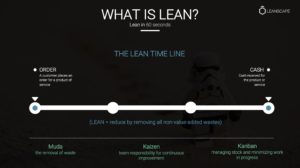Idea Summary: Pareto principle
The Pareto Principle, also known as the 80/20 rule, states that 80% of the effects come from 20% of the causes. In business, 80% of your profits come from 20% of your customers or products. This principle can be used to help you focus your time and energy on the most important things.
What is 80 20 rule? How the Pareto Principle Supercharges Your Productivity?
The Pareto Principle is a business and economic principle that states that, for many events, roughly 80% of the effects come from 20% of the causes. The principle is named after Vilfredo Pareto, an Italian economist who observed that 80% of the land in Italy was owned by 20% of the population.
The Pareto principle, or the 80 20 rule, is an industry-wide concept that can determine which projects will have the most significant impact. You can use this rule when you’re stuck staring at a screen, trying to decide where to start.
Keep reading if you know of an important project that can improve your efficiency and profitability. The 80/20 rule, also called the Pareto Principle, suggests that for most situations, a small minority of causes is responsible for most effects. In other words, 20% of causes usually attribute to 80% of outcomes.
Also known as the 80/20 rule, the Pareto Principle can be applied to various aspects of existence such as business, finances, and individual productivity. By reading this blog article, you’ll learn about this intriguing concept and how it can enrich your life and work ethic.
Table of Contents
History of the Pareto Principle
The Pareto Principle was first formulated by Italian economist and sociologist Vilfredo Pareto in 1896. Pareto observed that 80% of the land in his country was owned by 20% of the population. He also did a study of pea plants and found that 20% of pea pods in his garden contained 80% of the peas.
Pareto concluded that these proportions were generally true and began to apply them to other areas. He found that 20% of the population earned 80% of the income, 20% of criminals committed 80% of crimes, and so on. While Pareto’s observations were not rigorous from a statistical standpoint, his principle has since been backed up by many researchers using more sophisticated methods.
The Pareto principle is there a rule of thumb but it is a great tool for problem-solving and helps break down complex systems to find the right balance for work tasks. It is one of those key tools that help us increase production quality, and speed, improve operations management and stay focused on the most critical tasks.
How can I use 80 20 Rule to my advantage?
The Pareto Principle can be useful in many different areas of life. For instance, if you’re trying to increase your productivity, you may find it helpful to focus on your “vital few” tasks—the 20% that will produce 80% of results. Alternatively, if you’re trying to troubleshoot a problem, you may want to identify the root cause—the 20% that is responsible for 80% of the issue.
In business, the Pareto Principle is often used to help managers allocate resources more effectively. For example, if a company wants to increase sales, it may find it more effective to focus its efforts on its most valuable customers (the 20%) rather than trying to attract new ones (the 80%).
I have personally found the Pareto Principle helpful in my life. Whenever I sit down to work on a project, I try to identify which tasks are most important and will have the biggest impact. This allows me to focus on those tasks and get them done more quickly and efficiently.

History of the Pareto Principle
The Pareto Principle was first formulated by Italian economist and sociologist Vilfredo Pareto in 1896. Pareto observed that 80% of the land in his country was owned by 20% of the population. He also did a study of pea plants and found that 20% of pea pods in his garden contained 80% of the peas. Pareto concluded that these proportions were generally true and began to apply them to other areas. He found that 20% of the population earned 80% of the income, 20% of criminals committed 80% of crimes, and so on. While Pareto’s observations were not rigorous from a statistical standpoint, his principle has since been backed up by many researchers using more sophisticated methods. The Pareto principle is there a rule of thumb but it is a great tool for problem-solving and helps break down complex systems to find the right balance for work tasks. It is one of those key tools that help us increase production quality, and speed, improve operations management and stay focused on the most critical tasks.How can I use 80 20 Rule to my advantage?
The Pareto Principle can be useful in many different areas of life. For instance, if you’re trying to increase your productivity, you may find it helpful to focus on your “vital few” tasks—the 20% that will produce 80% of results. Alternatively, if you’re trying to troubleshoot a problem, you may want to identify the root cause—the 20% that is responsible for 80% of the issue. In business, the Pareto Principle is often used to help managers allocate resources more effectively. For example, if a company wants to increase sales, it may find it more effective to focus its efforts on its most valuable customers (the 20%) rather than trying to attract new ones (the 80%). I have personally found the Pareto Principle helpful in my life. Whenever I sit down to work on a project, I try to identify which tasks are most important and will have the biggest impact. This allows me to focus on those tasks and get them done more quickly and efficiently.How does the Pareto Principle Help improve productivity?
The Pareto Principle can help you improve your productivity in several ways. First, it can help you identify areas where you need to focus your attention. By focusing on the most important tasks, you can maximize the impact of your efforts and be more productive with less effort. Second, it can help you prioritize activities. Instead of spending time on non-essential tasks that won’t make a difference in the long run, you can focus on those that will really move the needle. This will also help save time in the long run because you won’t have to go back and take care of things later. Finally, the Pareto Principle encourages innovation and creativity by helping you think outside the box. You can explore new approaches and find creative solutions by identifying the areas that will have the most impact.How to use the Pareto Principle during a Lean Six Sigma project
The Pareto Principle can also be applied to Lean Six Sigma projects. During the Define phase of a project, you can use Pareto charts to identify which factors are causing 80% of the process issues. Then during the Analyze, Improve, and Control phases, you can focus on eliminating or reducing those factors to achieve the desired results.Using the Pareto principle to prioritise high-priority tasks
The Pareto Principle can also be used to prioritize tasks. Start by breaking down your project into individual tasks and then rank them according to their importance. Focus on the 20% that will have the greatest impact and ensure they are completed first. This will help ensure that you are making progress without getting bogged down in small, less important details. This can also be similar to when looking at your life and time management. When do you prioritise your high-priority tasks? Early in the morning when you are more productive? Very simply, a quick Pareto analysis can offer a very quick way to look at how you spend your time and effort and ask yourself are your activities focused on the right activities and the most productive tasks.Why is Pareto’s principle important?
The Pareto principles help determine which parts should be prioritized. 80 – 20 principles are a way to identify which resources are necessary to achieve maximum efficiency. This reduces the waste of time, money, resources, emotions, and energy. We wish we had more hours for our activities. Using 80-20 rules, it helps you find the most crucial things and focuses on the 20 %, which can give you maximum success in the smallest time possible.6 Pareto Principle Examples
In a way, the 80 20 pareto rule is often helpful in practice. Here are a few examples of using Pareto principles in different situations. 1. Business: 80% of a company’s profits come from 20% of its customers. 2. Investing: 80% of investors’ returns come from 20% of their investments. 3. Time Management: 80% of tasks are completed in 20% of the time allocated for them. 4. Retail: 80% of sales come from 20% of products. 5. Health: 80% of health benefits come from 20% of lifestyle changes. 6. Economics: 80% of a country’s GDP is contributed by 20% of its population.
How can the pareto distribution support goal settings for people involved in your team.
The Pareto distribution can support goal setting by helping identify the tasks that will have the most impact and should be prioritized. Focusing on these tasks, it can help ensure that resources are being used most efficiently. It also encourages team members to think outside the box and try new approaches to complete their tasks. Finally, it helps encourage accountability by ensuring everyone is aware of what needs to be completed when it needs to be done, and who is responsible for completing the task. This will help keep everyone on track and productive throughout the project.
How to build a Pareto chart in excel?
Pareto 80 20 rule charts are a great way to prioritize tasks and visualize the Pareto Principle. To build a Pareto chart in excel and conduct the Pareto analysis, you can follow these steps to build the Pareto diagram.
1) Firstly, collect your data. With the Pareto, you are measuring the frequency against categories. For example, you would list your customers first and then determine how much revenue each customer gives to the company. Or, you would collect the number of errors for each category you are interested in.
2) You then need to organise your data so that the frequency is in descending order
3) Using Excel, you then need to calculate what percentage each category represents of the total
4) Create a column to provide an accumulative percentage
5) Plot the categories on a simple bar chart
6) Plot the accumulative percentages on a secondary x-axis
Here is an example of a Pareto Chart showing how it helps identify manageable segments to help build an understanding of the entire team of activities needed to build better quality control.
Conclusion: 80 20 Rule | Pareto Principle
Pareto’s principle provides an effective way to allocate resources, prioritize tasks, and increase productivity. The Pareto Principle helps focus attention on high-impact activities that produce the most outcomes in the shortest amount of time. Business people, investors, entrepreneurs, and everyday individuals can use Pareto’s 80/20 Rule as a guide for making decisions about how to invest their time and energy. It is an invaluable tool for achieving maximum success with minimum effort.
By following Pareto’s rule, you can improve your productivity and ensure you are using your time and resources effectively to achieve the best results. Pareto’s Principle is invaluable for helping you focus on high-impact activities that produce the most outcomes in the shortest amount of time. It provides a framework for deciding how to invest your time and energy so that you can get more done in less time. With Pareto’s 80/20 Rule as a guide, anyone can use their resources wisely and be more productive.
In conclusion, Pareto’s principle is useful for improving productivity by focusing on high-impact activities that produce the most outcomes with the least effort. Pareto’s 80/20 Rule helps you decide how to invest your time and energy wisely to get more done in less time. By following Pareto’s rule, you can ensure that your efforts focus on what will have the most significant impact, and ultimately achieve better results.
Considering Pareto’s Principle is a great way to help increase productivity and make sure you’re getting the most out of your resources. Following Pareto’s principle, you can achieve maximum success with minimum effort!


















